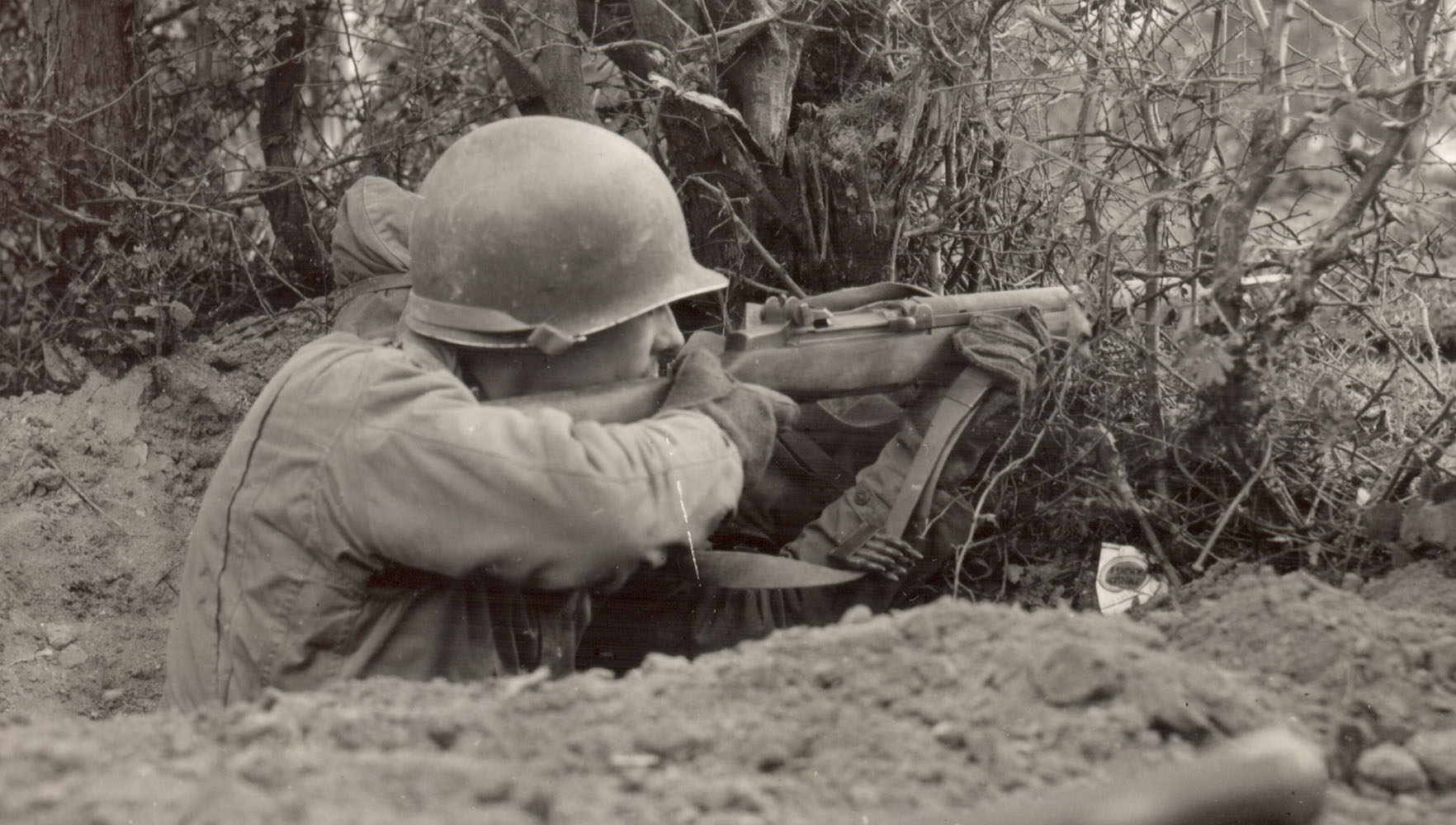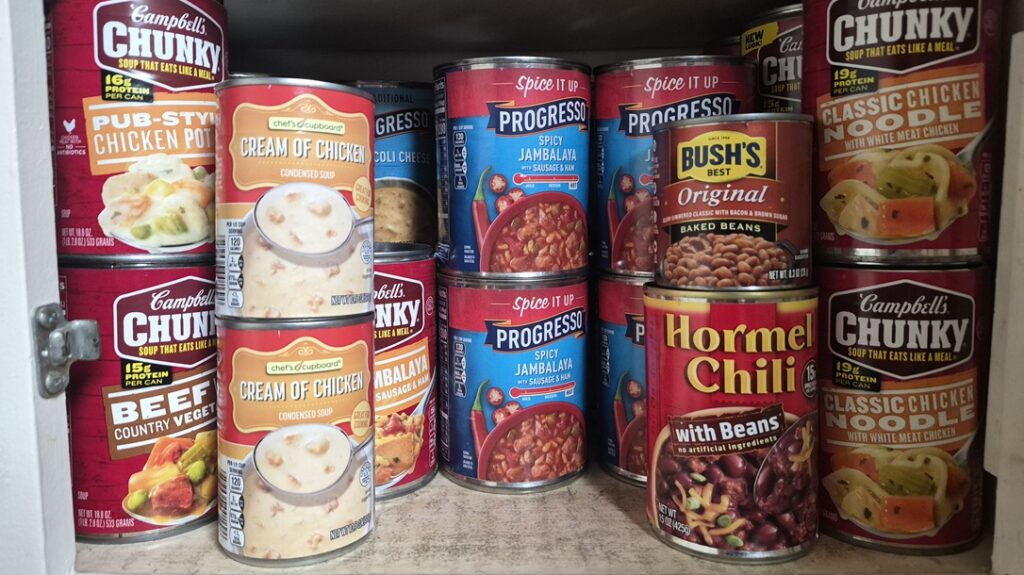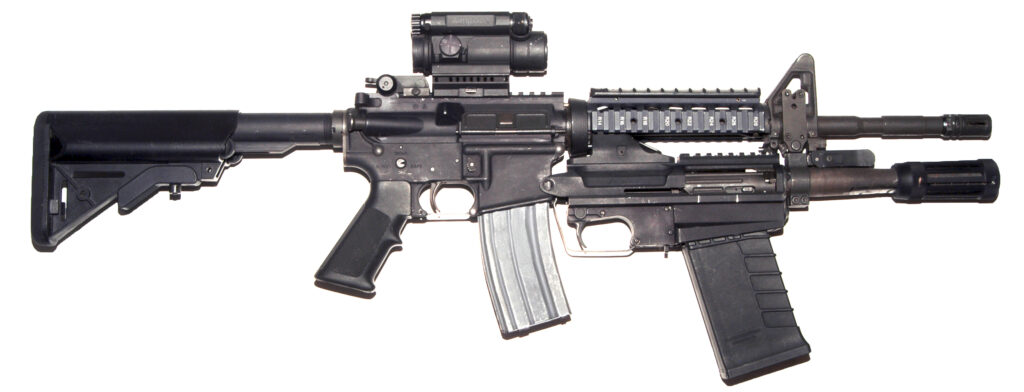“Very bright was that sword when it was made whole again; the light of the sun shone redly in it, and the light of the moon shone cold, and its edge was hard and keen. And Aragorn gave it a new name and called it Andúril, Flame of the West.”
-J.R.R. Tolkien
“In my opinion, the M1 rifle is the greatest battle implement ever devised.”
-Gen. George S. Patton, USA
This topic has always held my interest, on how a weapon attains a mythical status and why it held or holds that place. Whether famous or infamous weapons always generate a “common knowledge” legend around them that rarely holds up under scrutiny so here I am doing some digging. For each of these Myth and Legends articles, I want to take on a “pedestal” and a maligned weapon.
Advertisement — Continue Reading Below
On the Pedestal of Legend today is the M1 Garand rifle of WWII fame (as if you couldn’t guess by Patton’s quote above). I want to delve in and compare it to a rifle that had to earn its stripes kicking and screaming against the conventional wisdom (which the Garand design was part of) and many a controversy… The M16/M4.
So what I want to get into with this and future posts are the legends and the raw reliability of the weapons.
First up is Patton’s favorite Implement of the Infantry
Advertisement — Continue Reading Below

An endless supply of anecdotes, tall tales, conventional wisdom, heroic accounts, and digital ink can be found on the rifle of John C. Garand (pronounced ɡəˈrænd) but for brevity what the 1928 design did was introduce the auto-loading/semi-automatic battle rifle platform into the mainstream military thought process. It took 8 years for the rifle to be built up and converted for the U.S. Military’s desire to keep the 30-06 round as standard alongside the massive inventory of M1903s taking the same ammunition. It was tested and evaluated, then fielded to great effect with G.I’s, cementing it into its iconic U.S. WWII weapon image, although in reality many different weapons were used.
But what did those raw numbers look like? How did the Garand stack up for real?
Advertisement — Continue Reading Below
The November 1940 test conducted by the United States Marine Corps used to evaluate the weapon for adoption sheds some light the Garand’s real world performance.
Over 12,000 rounds, in various adverse conditions, and with 40 expert qualified riflemen they picked the Garand. The testers noted that it exhibited the best overall performance and easy of use to replace the 30 year veteran M1903’s.
The rifles themselves over those 12,000 rounds had 1,480 stoppages and 49 failures. That’s a rate of 12.3% or about 1 out of every 9 rounds.
Advertisement — Continue Reading Below
Yes, you read that correctly the U.S. Military fielded a rifle that stopped shooting and cycling normally about every 9 shots… and this was excellent for the time.
Imagine having to clear a “jam” on your AR, AK, or Glock every 9 shots… not a picture of flawless reliability.
However, in context the 12.3% was fantastic. It really was one of the greatest battle implements designed to date because of the general increase in individual soldier firepower. You take the standard soldier or marine with an M1903 and they could engage with 10, maybe 15 rounds in a minute. The Garand pushed that number to 50 and clearing a stoppage on the Garand was neither overly difficult nor negated that vastly superior fire rate. Each U.S. GI is now, mathematically, four conventionally bolt action equipped soldiers (which describes every other country’s GI of the time period). These changes came about without significantly altering the shot to shot lethality and effective range of the GI’s either.
Advertisement — Continue Reading Below
So was the M1 Garand the flawless master weapon? No *takes it off pedestal* but it was an exceptional upgrade to the current arsenal fielded by the U.S. at the time and fit the needs of the U.S. soldier extremely well. Even stopping 1 in every 9 shots.
Now we’ll switch gears and go to the “garbage bin”

Advertisement — Continue Reading Below
The M16 and M4 have had a checkered life in military service despite being the longest serving rifles in our history. From the stories of soldiers tossing M16’s into the swamps and jungles of Vietnam and acquiring an M14 or AK instead to the highly publicized Battle of Wanat where some blamed the M4 as a contributing factor to the high casualties suffered under that attack.
The 2007 Aberdeen rifle dust test was another allegedly terrible and more recent performance by the M4 showing it placed last by a wide margin against some newer competing weapon systems.
While Aberdeen was junk pseudo-science that men like Robert Scales (Retired Maj. Gen, US Army) used along with Wanat to try and convince the public and military that the M16 and M4 were always bad weapons. Some useable data did come out of the test.
Advertisement — Continue Reading Below
For example the stoppage rate. The highest recorded stoppage rate was… 1.4% and that was documented to be four times higher than any previous iteration of the 6,000 round test averaged over 10 rifles (60,000 total rounds) making the prior and likely more accurate rate 0.35% right in line with the weapons it was tested against (The XM8, HK416, and SCAR)
Furthermore looking the facts from Wanat all the way back to Vietnam the M4 and M16 have performed admirably when used properly. In Wanat, the guns were stressed to the extreme and reported failures were not a significant factor in the fight nor were the M4s the only weapons systems to fail out due to extremely high fire rates. In Vietnam, the military literally instructed their soldiers to do the wrong thing with the weapons and used improper ammunition.
So for our Myth and Legend this article. The Legend of the Garand rifle is humbled to a grand piece of advancing technology great for its era but long surpassed today by advances. The Myth of the horrendous and irredeemable M16 and M4 rifles doesn’t stand up to the sniff test either with a reliability rate (at worst recorded) of nine times higher than the Garand some I’ve spoken with say we should still be fielding.
Advertisement — Continue Reading Below
This has been fun. What guns should I dig into next?
Source Article from http://248shooter.com/index.php/myths-legends-famous-infamous-firearms-garand-m16/














